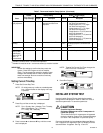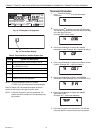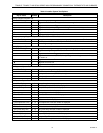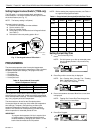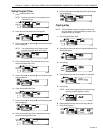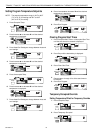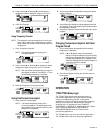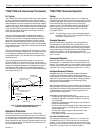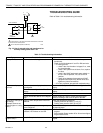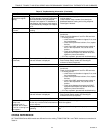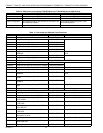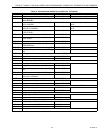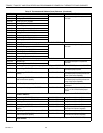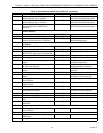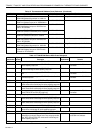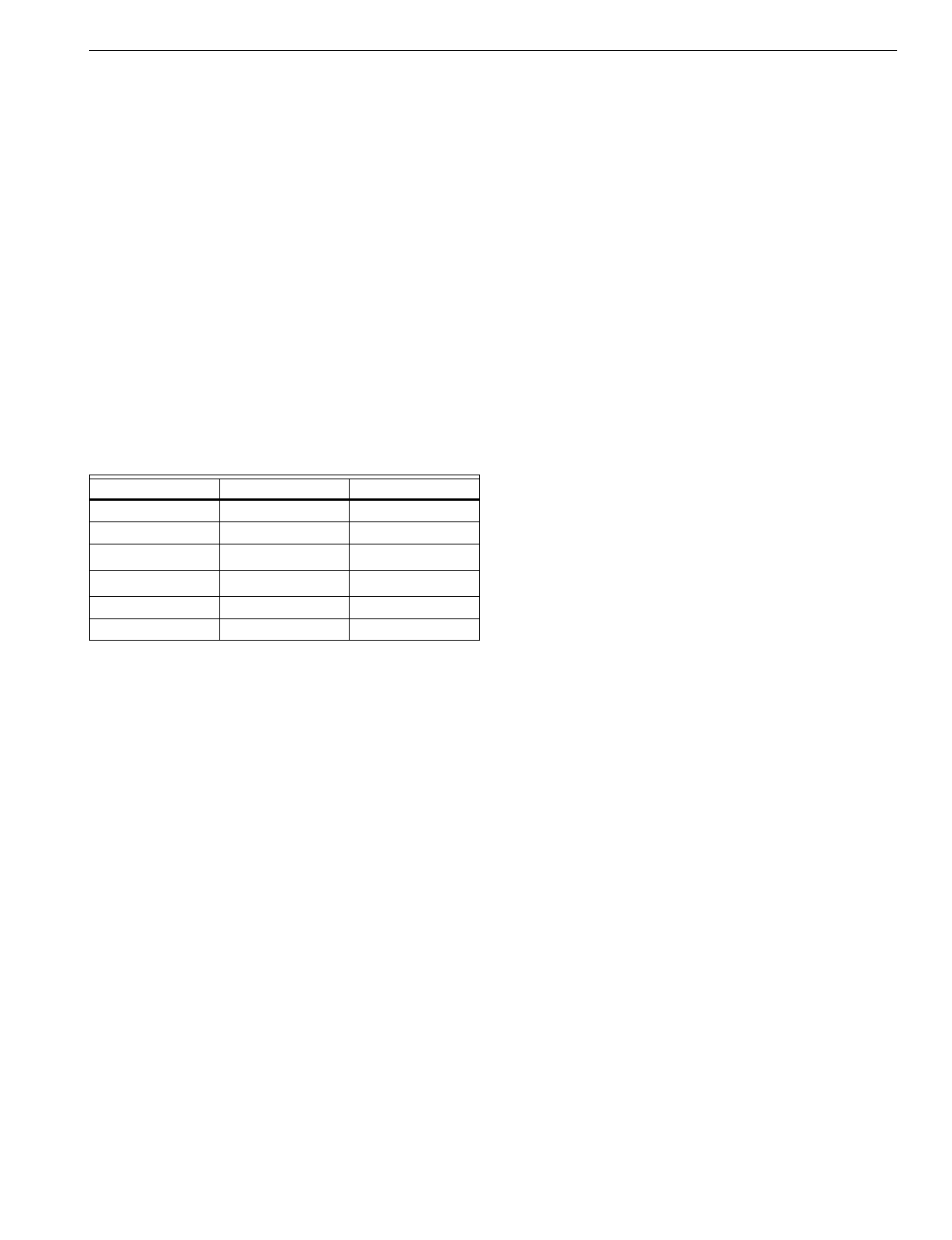
T7200D,E, T7300D,E,F AND Q7300 SERIES 2000 PROGRAMMABLE COMMERCIAL THERMOSTATS AND SUBBASES
21 63-4355—4
Conventional System
The T7200 and T7300D,F Thermostats with Q7300A,G,H
Subbases are designed for conventional heat/cool
applications.
Heat Pump Operation
The T7200E and T7300E,F Thermostats with Q7300C,D,H
Subbases are designed for heat pump applications. Additional
information is required when configured for heat pump
applications.
O AND B TERMINALS FOR HEATING OR COOLING CHANGEOVER
The Q7300C controls heat pump changeover. The Q7300D,H
is only used in a heat pump application when the heat pump
controls the reversing valve changeover. See Table 12 for the
operation of the O and B terminals on the Q7300C, H2003.
O AND B TERMINALS ON A CONVENTIONAL SUBBASE
Conventional subbase O and B terminals can be used to drive
dampers and valves. The O terminal is energized on a call for
cool and the B terminal is energized on a call for heat.
Table 12. Operation of Q7300 O and B terminals.
a
When the system is calling for heat or is de-energized, but
the last function was heat.
b
When the system is calling for cool or is de-energized, but
the last function was cool.
c
When the last function was heating, the operation is the
same as Auto (Heat). If the last function was cooling, the
operation is the same as Auto (Cool).
FAN OPERATION
When the fan is set to On, the fan is energized continuously in
the Occupied period. The Auto setting energizes the fan with
the heating or cooling system. If the subbase is Q7300D, the
fan cycles with Y1 and W1 during Unoccupied period.
EMERGENCY HEAT (SELECT T7300 THERMOSTATS
ONLY
)
With the system set for
Em Heat
, auxiliary heat serves as
stage one; compressor stages are locked off. The fan cycles
with the auxiliary heat.
COMMUNICATING SUBBASE
Select T7300F Thermostats with the Q7300H Communicating
Subbase are designed for conventional or heat pump
applications in a LonWorks® network. The Q7300H Subbase
allows remote access and the sharing of clock, schedule,
setpoints, bypass and other system parameters in a
L
ON
W
ORKS
® network. See Fig. 33 for a T7300F/Q7300H
wiring layout in a L
ON
W
ORKS
® network.
GENERAL OPERATION INFORMATION
Cycle Rates
The thermostat control algorithm maintains the temperature
by cycling stages of heating or cooling to meet setpoint.
Subbase Auxiliary Relay
The Q7300 Auxiliary Relay output acts as a time-of-day switch
to be used with an economizer minimum position control. The
normally open (A1) auxiliary relay contacts are closed during
the Occupied period and open during the Unoccupied period.
The normally closed (A3) auxiliary relay contacts are open
during the Occupied period and closed during the Unoccupied
period. The contacts are in the normal state during recovery.
Interfacing with Electromechanical
Economizers (Subbases with Auxiliary Relay)
Mechanical cooling is often used when outside temperatures
are in the 50°F (10°C) to 60°F (16°C) range and humidity is
below 50 percent. In central and northern climates, hundreds
of hours fall into this temperature category. By permitting 80 to
100 percent outside air into the system, mechanical cooling
may not be needed at all, particularly during Spring and Fall.
An economizer is used to take advantage of the outside air.
The typical economizer consists of an outside air damper,
motor, outdoor air changeover control and a minimum position
potentiometer. The motor controls the dampers. Suitability of
the outside air for cooling is determined by the outdoor air
changeover control. The potentiometer is used for adjusting
the minimum position of the economizer dampers, which
provide a minimum amount of fresh air for ventilation.
The economizer reduces compressor run time, thereby saving
energy and extending the compressor life. The drawback to
using the economizer is that during the Unoccupied period, if
there is no call for cool or outdoor air is not suitable for free
cooling, the economizer is controlled to minimum position.
This position allows some percentage of outdoor air to enter
the building, regardless of air suitability. The situation can
cause the heating or cooling to run more often than if suitable
outdoor air is permitted to enter the building.
The thermostat can take advantage of an economizer by
connecting the subbase auxiliary relay contacts (A1 and A2)
to control the economizer minimum position potentiometer.
The contacts close during the Occupied period, allowing the
economizer to operate normally. The contacts open during the
Unoccupied period, disabling the minimum position feature of
the economizer. The open contacts cause the economizer to
drive dampers fully closed instead of staying at minimum open
position. This reduces the possibility of unsuitable outdoor air
from entering the building, which lowers the internal load on
the HVAC system and saves additional energy.
Other Uses for the Auxiliary Relay
Examples of other uses of the auxiliary relay are hot water
heaters, lighting or baseboard heat. The additional loads are
connected to the auxiliary relay contacts on the subbase. The
contacts are rated for 1.6A at 30 Vac, but can be adapted to
higher current applications with the use of an external relay
and transformer. See Fig. 19.
System Selection O Terminal B Terminal
Heat Open Closed
Cool Closed Open
Auto (Heat)
a
Open Closed
Auto (Cool)
b
Closed Open
Emergency Heat Open Closed
Off
cc



